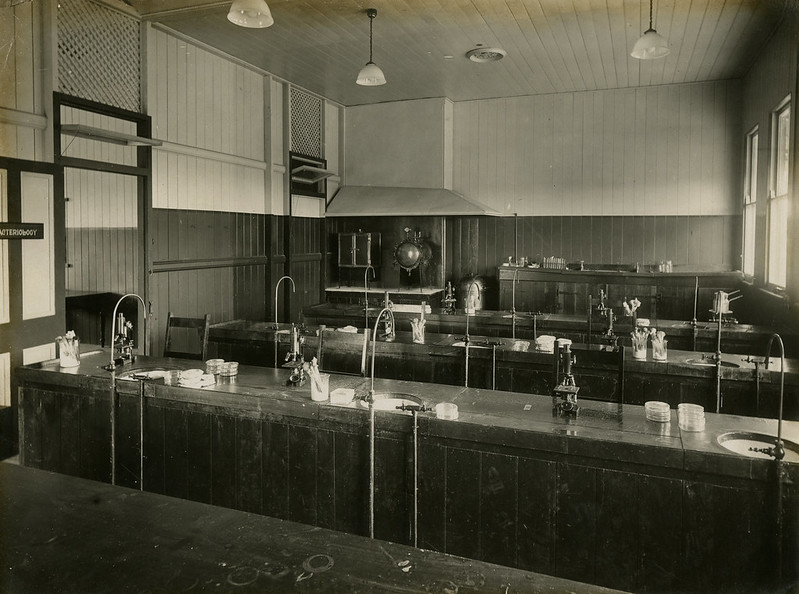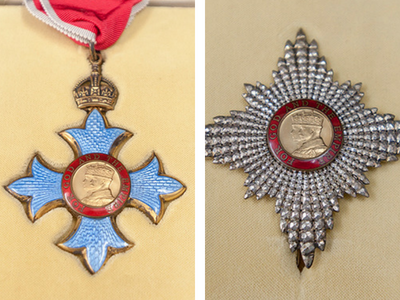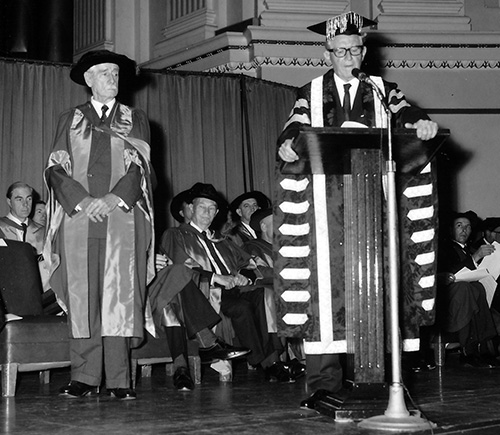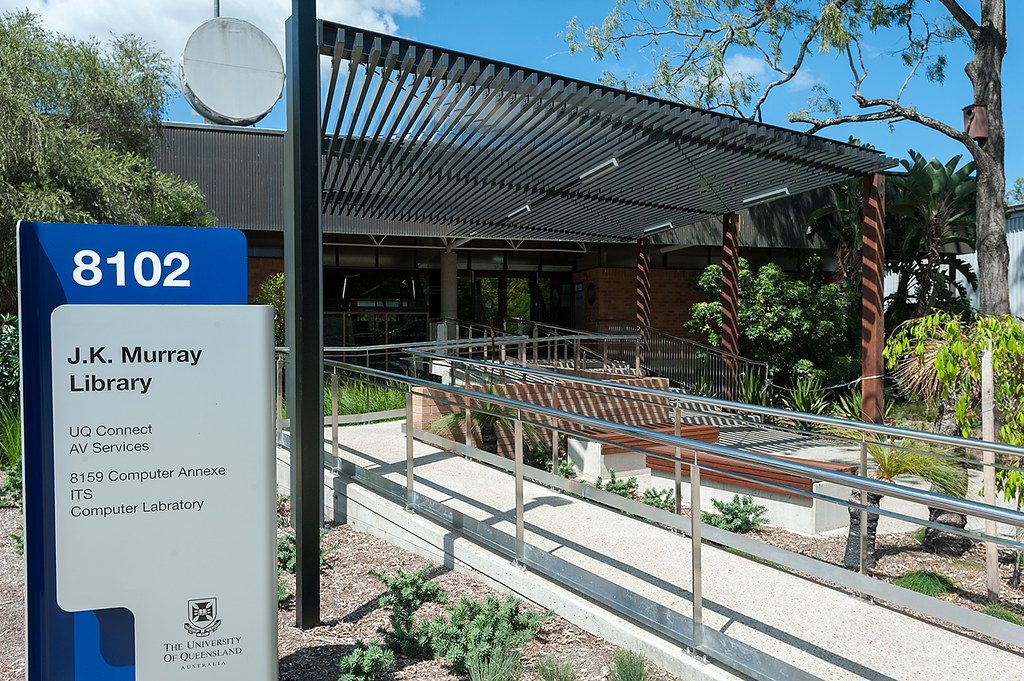Jack Keith (JK) Murray was a remarkable man who held a lifelong belief in the value of education. The UQ Gatton Library has been named in his honour since 1976 and was reopened bigger and better in 2018.
In this story, discover this modest and exceptional man. Read about his life and the impact he had on his students and agriculture education in Queensland. View images from his photographic collection. Understand his values and legacy, through the JK Murray Library.
A positive future through education
JK Murray (1889 - 1979) had a difficult start in life. His parents separated when he was three, and his younger sister died in infancy. His mother, Elinor, worked as a domestic servant to provide for her son. This type of work was scarce and the family moved frequently. JK attended eleven different schools. Elinor wanted a better life for her son; she believed a good education would steer him onto a better path. By 1904, Elinor had saved enough money for JK to attend the prestigious St Joseph’s School in Hunters Hill, Sydney.
Elinor encouraged her son to further his education at university. Later in life, JK appreciated his upbringing and attributed his belief in education to his mother, saying that it was “… impossible to pay an adequate tribute to her.”1
Education: work, university, military
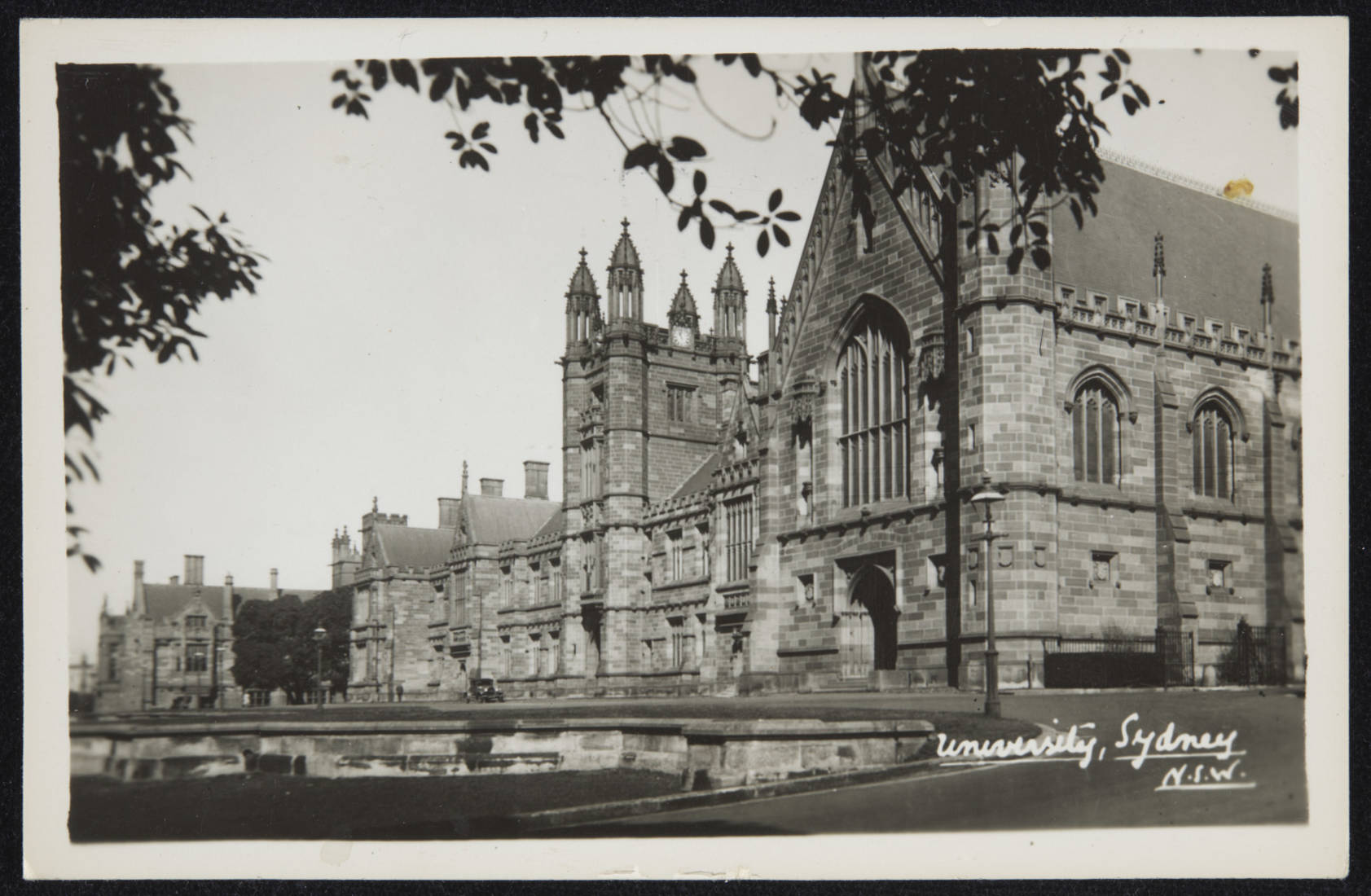
In 1908, JK Murray was awarded a bursary to attend the University of Sydney. While he was at university, his mother saw an advertisement in the Sydney Morning Herald newspaper for a scientific cadetship in Cowra, New South Wales, and encouraged her son to apply. He won a place after passing the entrance exam with top marks.
After two years of studying and working in the country, JK returned to the University of Sydney to complete his studies. He decided to enrol in both Bachelor of Agricultural Science and Arts. He graduated with a degree in Agricultural Science in 1914 and Arts in 1915. JK utilised this valuable broad skill set throughout his life.
Prior to the First World War, Australia introduced the Compulsory Military Training Scheme. JK served in the Sydney University Scouts, where he demonstrated an aptitude for military studies and was an ace shot. By 1916, he was a Captain and had a Diploma of Military Science.
Service in the First World War
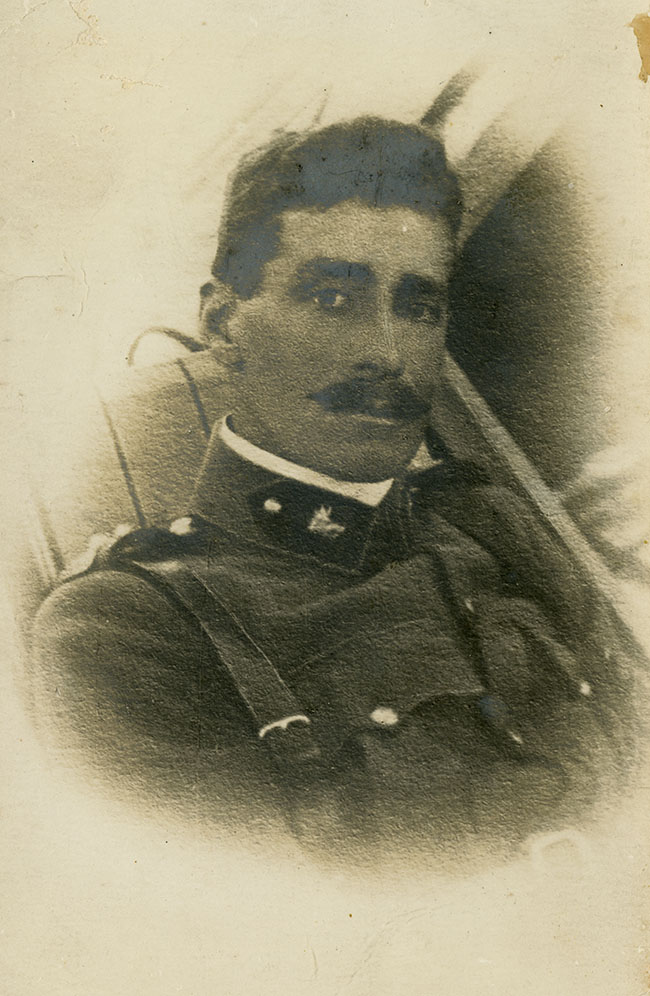
JK Murray joined the Australian Imperial Force in 1916. He sailed to France as Adjutant on the Kyarra and performed administrative duties. Following his return to Australia, he received his discharge papers and went to work at Hawkesbury Agricultural College, New South Wales.
JK's sense of duty lead him to re-enlist in 1917. Due to his agricultural background, he was assigned to the veterinary corps where he took care of the horses most of the time. Murray mused later in life that the army figured he must “know one end of a horse from the other.”2
At the end of the First World War, JK stayed in the army and took the opportunity to study under the Non-Military Employment Scheme. This allowed him to further his civilian education while still serving. He studied and excelled in Dairy Science at the Dairy School for Scotland, Kilmarnock. He travelled back to Australia, via the United States of America and Canada, studying the latest trends in agricultural science education.
In 1920, he returned to Hawkesbury Agricultural College as a lecturer in dairy bacteriology.
This experience prepared him for a new opportunity at the Queensland Agricultural High School and College at Gatton, Queensland.
Evelyn, a devoted and talented partner
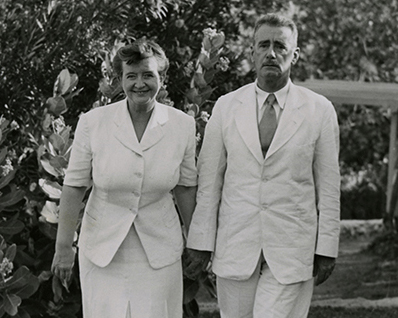
In 1921, while JK was a guest lecturer at the University of Sydney, he noticed a woman in the back corner of the lecture theatre, “wearing a pink dress, and certainly a black hat with pink lining, who looked a real picture!”3 Her name was Evelyn Ernestine Pritchard Andrews and she was studying Agricultural Science. While they did not meet that day, not long after the lecture, Evelyn travelled to Hawkesbury Agriculture College to gain some practical experience. A romance bloomed and soon the two married on 10 July 1924 at Scots Church, Sydney.
Evelyn’s teaching career flourished alongside JK's.
Teaching "Science with Practice"
“To devote more attention to practical farm work and less to academic subjects is to follow methods which every agriculturally advanced nation is discarding” - JK Murray
In 1923, JK Murray started as Principal of the Queensland Agricultural High School and College (QAHSC). Murray had taken over the management of a college that had become run-down and at risk of being closed. He expanded the curriculum, improved the sporting grounds and introduced organised sports (tennis, boxing, lifesaving, rugby union, swimming, and athletics) and activities like Boy Scouts, a rifle club, and the First Cavalry Veterinary Mobile Section. During his sixteen years at Gatton, enrolments increased from 33 to 350.
JK had a reputation as a hard taskmaster. On enrolment, each student received a copy of the Students' Handbook, signed by the Principal. This outlined the strict rules for college operations and student behaviour. Robert Milford, a former student of JK's, broke these rules and was made to dig out tree stumps as punishment. Murray believed that you could learn something from every experience, good or bad.
In the following audio file, Milford recalls an incident where JK broke his own rules and sat among the students instead of the staff “high table”.
JK and Evelyn believed that social intelligence was a huge part of an individual’s education. To function in the world, Murray believed his students needed experience in conducting themselves in society. To socially educate these young men, JK and Evelyn would arrange a high dining experience at a top Brisbane restaurant, Rowes Café. They would take 20 or so young men to the restaurant so they could learn the etiquette of fine dining. Many students told them years after they graduated, how much they loved to go on these outings.4
UQ and the Gatton Agricultural College
QAHSC planned to collaborate with the University of Queensland to help establish Agriculture as a discipline at the University. JK's role meant travelling to St Lucia from Gatton one day a week to give lectures as a Professor of Agriculture.
The Director of Education thought it was a waste of money for a Principal to travel that distance to spend a whole day with only five students. The academics at St Lucia disagreed. They stated Murray was building a bridge between Biology and Agriculture and saw that he encouraged agriculture students towards higher education. Other critics thought the College was abandoning practical skills in favour of academic studies.
For a man known for his reserved and austere manner, JK Murray fought back with passion.
Some people demand that the farmers' and graziers' sons shall merely be trained as a farm worker or station hand, and shall be denied an education.5
His beliefs shaped the Gatton College motto “Science with Practice", which first appeared in the 1924 Annual Report of the College and was used to describe its primary goal.4
Service in the Second World War
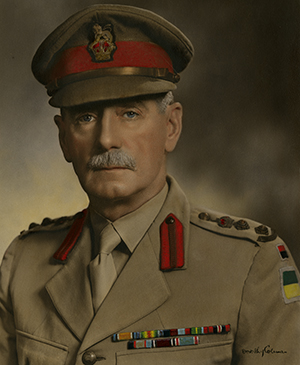
JK had prepared students for war through the First Cavalry Veterinary Mobile section and a campus rifle club. Former student Robert Milford recalls the day when JK Murray addressed the students about the forthcoming war.
When the Second World War began, Murray was seconded back into the Army.
From 1940 to 1943, he took charge of army training in Queensland and moved to Warwick to do so. In 1943, he became the Chief Instructor for the School of Civil Affairs, Duntroon, Canberra, where he trained the staff who would be administrators of Australia’s territories.
Evelyn stayed on at Gatton and continued teaching as well as contributing to the war effort.
When JK heard that the United States Army was having trouble finding a location for a military hospital, he suggested the Gatton campus. A great portion of the campus and most of the buildings were requisitioned for this purpose from March 1942 until July 1944.
Towards the end of the war, JK was sent to Papua and New Guinea to report on the impact of the conflict. This appointment would change his career direction. He would not return to Queensland Agricultural College, but take up the new position as the Administrator of Papua and New Guinea.
First Administrator of Papua and New Guinea
In September 1945, JK Murray was appointed the First Administrator of the Australian territories of Papua and New Guinea. He managed the territory as he had the Gatton College, with a staunch belief in the power of self-determination. He treated the Indigenous people with respect and consulted communities before making decisions. This shocked the white establishment (a term of the time) in Papua and New Guinea and they boycotted events that involved JK and Evelyn.
Murray utilised his education background, bringing the missionary and government schools together and introducing English classes in schools. He also brought reform into the court system and councils, established medical training, transitioned agriculture towards a cooperative model, and abolished the indentured labour system. Eventually, the progressive nature of his views undermined the trust of the Australian bureaucracy. Murray was stood down from his post in 1952.
Retirement and beyond
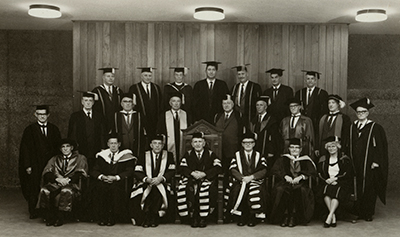
Full image description on UQ eSpace.
JK and Evelyn retired to Brisbane, and he took up a seat on the University of Queensland Senate. In 1955, Evelyn was offered the role of principal of the Ceylon Agricultural College for Women, an initiative under the Colombo Plan. JK went along to Ceylon as the spouse of an educational trailblazer. However, he soon made himself useful, taking on the role of advisor to the Department of Agriculture. In his report, JK singled out the role of libraries and reading in developing character:
“To learn to like reading is an important factor in the worthwhileness of the student’s eventual contribution to his community.”6
Honours and accolades
JK received an Order of the British Empire in 1959, and an Honorary Doctorate of Science from the University of Queensland in 1967.
He also mentored Papua New Guinean students in Australia, bringing groups on study tours and supporting the education of individuals. He continued to embody the conviction that education changes lives. He was often asked to give guest lectures and speeches and was keen to share his knowledge.
UQ made him an Emeritus Professor in 1975. The following year, UQ Gatton’s new library was named after him.
The Government of Papua New Guinea petitioned for a knighthood for their former administrator. The country he had served for seven years had never forgotten his contribution to the building of their nation and the right to self-govern. He became Sir Jack Keith Murray in 1978.
JK Murray died on 10 December 1979. Evelyn passed away in 1984.
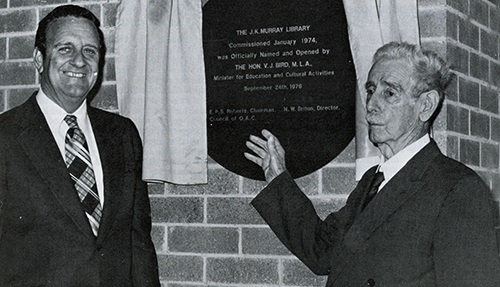
The JK Murray Library at UQ Gatton
The Library is a student-focused hub dedicated to learning.
Today, the JK Murray Library is a student-focused hub where students research, access support services, study, collaborate and share ideas. The library provides a vibrant learning environment that integrates on-campus learning, community engagement, and student life.
At the opening of the new space, in April 2018, Emeritus Professor Alan Rix said:
[The] student cohort is very attuned to the needs and demands of their disciplines and I think [they] appreciate the practical focus of the campus in providing all the animals and the agricultural facilities they need for their study.
This library building is about providing the best learning conditions and optimal staff facilities for the students living on and off campus.
Professor Alan Rix, opening speech.
We're proud to have a library named after a person to whom learning and education was a life long pursuit. "Science with Practice" lives on at Gatton.
Images of the JK Murray Library
The digitised JK Murray collection including photographs are available to view on UQ eSpace.
Do you have a story about Gatton that you'd like to share? Please share your story with us by emailing gatinfo@library.uq.edu.au. If you'd like to join the conversation using social media, please add your comments to our Facebook, Twitter or Instagram accounts, using the hashtag #UQGattonLibrary.
References
-
Jinks B. Murray, Sir Jack Keith (1889–1979). http://adb.anu.edu.au/biography/murray-sir-jack-keith-11209. 2000. Retrieved 21 May 2018.
-
Murray JK, Lunney S. Jack Murray interviewed by Suzanne Lunney. https://trove.nla.gov.au/version/38137276. 1974.
-
Murray JK, Lunney S. Jack Murray interviewed by Suzanne Lunney. https://trove.nla.gov.au/version/38137276. 1974.
-
Murray JK, Lunney S. Jack Murray interviewed by Suzanne Lunney. https://trove.nla.gov.au/version/38137276. 1974.
-
Craig-Smith SJ, Middleton JC, Pearson CJ. Gatton College: 100 years of science with practice. Brisbane: University of Queensland, 1996
-
Murray, Jack Keith, ‘A report on the organisation, coordination, and administration of agricultural education and training, with particular reference to the agricultural schools for boys and girls in the Department of Agriculture, Ceylon’, 22 Sept 1956, JK Murray Collection, UQFL91, Box 2, Fryer Library, The University of Queensland Library.
Some of the images and effects may be compressed on your mobile device. For the full experience, view the story on your personal computer.
